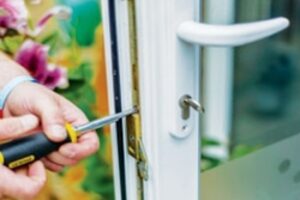10 Misleading Answers To Common Bolt Lock Replacement Questions Do You Know The Right Answers?
Bolt Lock Replacement: A Comprehensive Guide
When it concerns home security, making sure that all locks are working effectively is critical. Among the key elements of a secure door is the bolt lock. In time, bolt locks might wear or become obsolete due to advancements in innovation. This short article explores the procedure of bolt lock replacement, covering everything from comprehending when to change a bolt lock to providing a step-by-step guide for those thinking about a DIY approach.
Comprehending Bolt Locks
Before delving into the replacement procedure, it is vital to understand what a bolt lock is and how it works. A bolt lock is designed to secure a door by using a solid metal bolt that extends into the door frame when locked. Unlike a standard latch lock, which can be easily required open, a bolt lock supplies boosted security.
Types of Bolt Locks
There are several types of bolt locks offered on the market:
Deadbolt Locks:
- Heavy-duty locks that provide maximum security.
- Require a crucial or thumb turn to operate.
- Offered in single and double-cylinder styles.
Vertical Deadbolts:
- Mounted vertically on the door.
- Offer increased resistance against forced entry.
Smart Deadbolts:
- Operated through mobile phones or keypads.
- Typically geared up with features such as remote locking and unlocking.
Chain Bolt Locks:
- Used mainly for securing gates or interior doors.
- Offer a fundamental level of security with easy operation.
Signs It's Time to Replace a Bolt Lock
Understanding when to change a bolt lock is crucial for preserving security. Here are some typical indicators that suggest it's time for a replacement:
- Wear and Tear: Visible signs of deterioration, rust, or damage to the bolt or housing.
- Difficulty in Operation: If the lock is challenging to turn or frequently jams.
- Keys Don't Work: If numerous secrets are unable to unlock the door, it could suggest internal damage.
- Home Renovation: During home upgrades, it may be sensible to replace old locks with new ones for visual and security factors.
The Replacement Process
Replacing a bolt lock might appear daunting, but with the right tools and instructions, it can be achieved easily. Below is a step-by-step guide to assist homeowners navigate the replacement process.
Tools Required
- Screwdriver (flathead and Phillips)
- Drill (if new holes are required)
- Measuring tape
- New bolt lock set
- Chisel (if needed for adjustments)
- Safety glasses
Step-by-Step Guide
Action 1: Remove the Old Lock
Get rid of the Screws: Unscrew the exterior plate using the appropriate screwdriver. Keep screws in a safe location for prospective usage later.
Take Out the Bolt: Carefully pull the bolt mechanism out of the door.
Disconnect the Strike Plate: Remove the strike plate from the door frame by unscrewing it.
Step 2: Prepare for New Lock Installation
Clean the Area: Clean the door and frame around the bolt hole to remove particles or old wood splinters.
Inspect Measurements: Using a determining tape, ensure that the new lock matches the size of the old bolt lock to avoid unneeded drilling.
Step 3: Install the New Lock
Place the New Bolt: Place the new bolt mechanism into the slot, guaranteeing it fits snugly.
Connect the Exterior Plate: Align the exterior plate with the bolt lock and secure it with screws.
Install the Strike Plate: Position the new strike plate on the frame and screw it in location. Guarantee it lines up perfectly with the bolt when the door is closed.
Check the Lock: Finally, place the essential or turn the mechanism to test that it operates efficiently.
Table of Common Bolt Lock Sizes
Lock Type
Backset Size (inches)
Bolt Length (inches)
Door Thickness (inches)
Single Cylinder Deadbolt
2 3/8 or 2 ¾ 1 in
1 3/8 to 2 in
Double Cylinder Deadbolt
2 3/8 or 2 ¾ 1 in
1 3/8 to 2 in
Smart Deadbolt
2 3/8 or 2 ¾ 1 in
1 3/8 to 2 in
Frequently Asked Questions about Bolt Lock Replacement
Q1: Can I change a bolt lock myself?A: Yes, replacing a bolt lock can be aDIY task if you have the right tools and follow appropriate directions. Q2: How frequently need to I change my locks?A: It is advised to
assess your locks every year and think about replacements every 5-7 years, orsooner if any concerns emerge. Q3: Are smart locks worth the investment?A: Smart locks offer convenience and advanced security functions, which can be worth the expense for numerous house owners. Q4: What should I do if my new lock does
n't fit?A: If the new lock does not fit, recheck the specifications and measurements. You might need to drill new holes or seek expert help. Q5: How do I preserve my bolt locks?A: Regular cleaning and lubricating thelock mechanism can assist preserve functionality and longevity. Replacing a bolt lock is a crucial aspect of home security that must not
be neglected. Whether due to use and tear or developing security requirements, understanding how to successfully perform a bolt lock replacement empowers property owners to manage their safety.
By following the step-by-step guide and knowing the indications suggesting a requirement for replacement, they can ensure their doors are secure and trusted. With www.repairmywindowsanddoors.co.uk and caution, protecting one's home has actually never ever been more workable. 